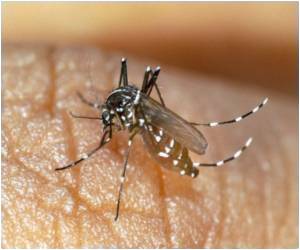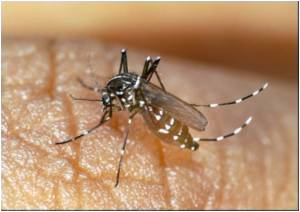Scientists have long known that the process of viral emergence involves a variety of factors.

The alteration was so small a single amino acid change in one of the virus' exterior "envelope" proteins that a researcher compared it to "a single missing comma in a six-page short story." But this so-called "E1-A226V mutation" made it possible for the virus to efficiently infect Aedes albopictus, a species of mosquito found nearly worldwide.
The mutated strain of the virus took full advantage of its new host, infecting millions of people as it spread across India, Thailand and Malaysia. It even jumped to northern Italy, carried by an infected traveler, where it established itself in the local Aedes albopictus mosquito population.
This albopictus-adapted strain's success raised a fundamental question, for this was not chikungunya's first visit to Asia. Strains of the virus transmitted by another mosquito species, Aedes aegypti, have caused sporadic outbreaks there for nearly six decades. If the virus was changing all the time, and only one minor mutation was necessary to switch the virus from aegytpi to albopictus a more widespread vector why hadn't that mutation happened in the strains that had arrived in Asia 60 years before?
"Asia is Aedes albopictus' native territory, but we can't find any evidence of chikungunya transmission by albopictus until the arrival of this new strain," said UTMB pathology professor Scott Weaver, senior author on the PNAS paper. "It was surprising to us that strains of this apparently very adaptable virus circulated in Asia for 60 years without making the adaptation that would allow them to be transmitted by albopictus."
To find out what was going on, Weaver and his colleagues lead author and postdoctoral fellow Konstantin Tsetsarkin, postdoctoral fellow Rubing Chen, research technician Grace Leal, assistant professor Naomi Forrester, professor Stephen Higgs, and research associate Jing Huang conducted experiments based on the hypothesis that some part of the Asian chikungunya strains' genetic code was suppressing the key mutation whenever it occurred and thus keeping it from infecting Aedes albopictus.
Advertisement
Ultimately, they found that a single genetic element which also changed an amino acid in the same envelope protein altered by the E1-A226V mutation increased the Asian chikungunya strains' ability to infect Aedes albopictus by a hundredfold.
Advertisement
The chikungunya story, Weaver said, demonstrates how small genetic differences among viruses can have dramatic and unexpected effects on their ability to cause human disease. This study also will allow researchers to predict the amount of disease chikungunya may cause if it becomes endemic in the Americas.
"We don't really have the ability to predict when these viruses are going to suddenly mutate and change from one host to another. We can figure out how it happened retrospectively, but we have no idea how many near misses there are," Weaver said. "This was an opportunity to understand one situation where for a long time epidemic emergence didn't happen for a virus in Asia, and how it did happen suddenly when another strain got loose from Africa and started spreading around the globe."
Source-Eurekalert










